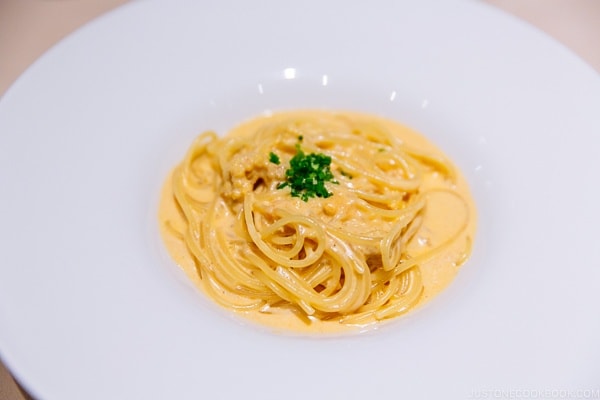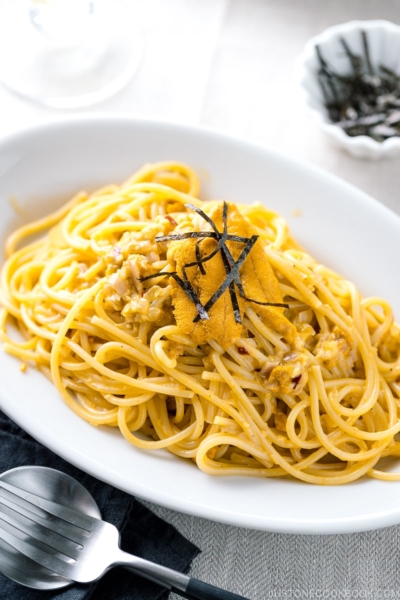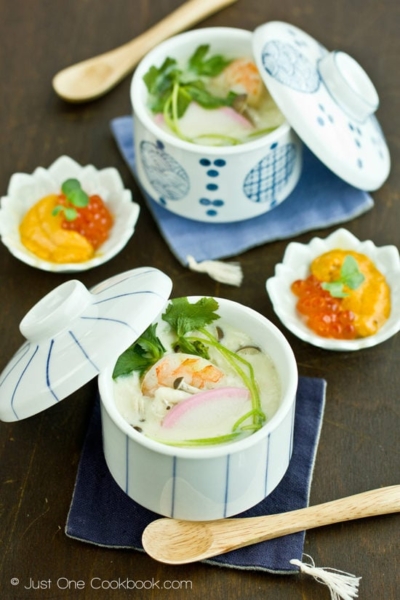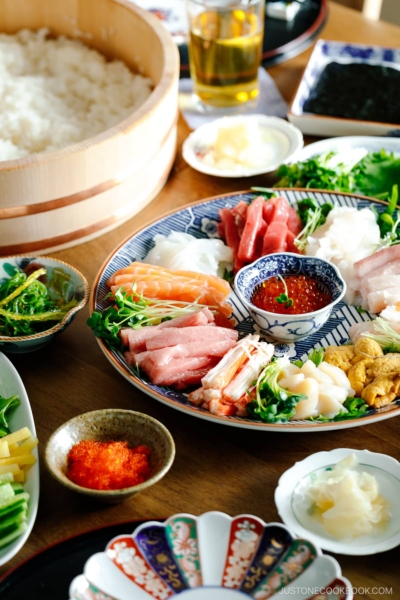Served as nigiri sushi, sashimi, or a luxurious topping, uni is the Japanese name for the edible part of the sea urchin, an ocean delicacy. It’s known for its sweet flavor and custard-like consistency.
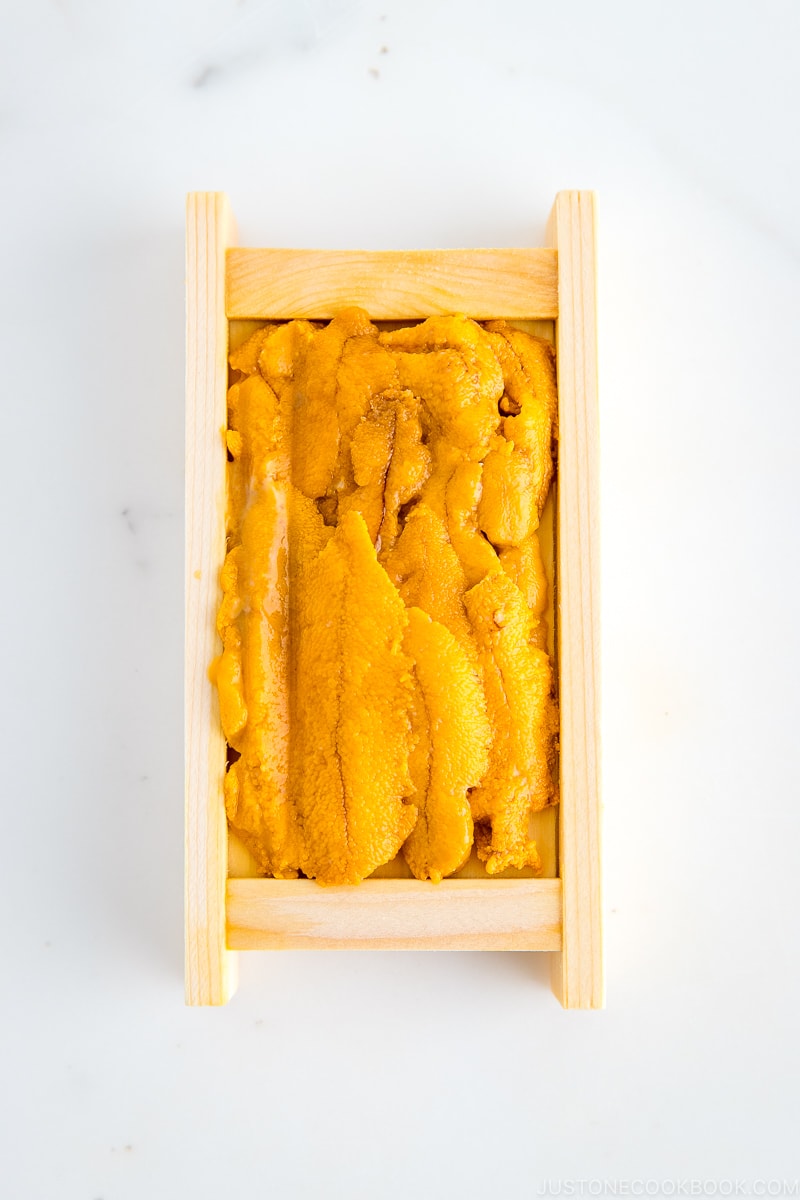
Uni (雲丹) [pronounced ‘oo-nee’] is the Japanese name for the edible parts of sea urchin. It comes in various colors, from pale yellow to vivid orange, and tastes like a salty and creamy umami bomb.
In Japan, it’s a prized ingredient eaten as gunkan maki (軍艦巻き “battleship roll”) sushi with nori seaweed wrapped around sushi rice and topped with uni or other delicate fillings. It’s also eaten in sashimi or as a decadent garnish for seafood dishes. It’s an acquired taste, but its laborious harvest methods and global demand have reflected its high price point. Some connoisseurs call it an aphrodisiac.
Table of Contents
What Is Uni
Uni refers to both the prickly sea creature and the edible insides. Frequently mistaken as the eggs or caviar, uni refers to the gonads, the fivefold sexual reproductive organs that produce the milt or roe. It sustains on a diet of algae.
Covered with sharp spines, sea urchins are echinoderms, including starfish, sand dollars, and sea cucumbers. Inside the beautiful hard shell lies the edible pieces. They somewhat resemble cow tongues in shape and texture. Uni is a culinary delicacy in many parts of the world.
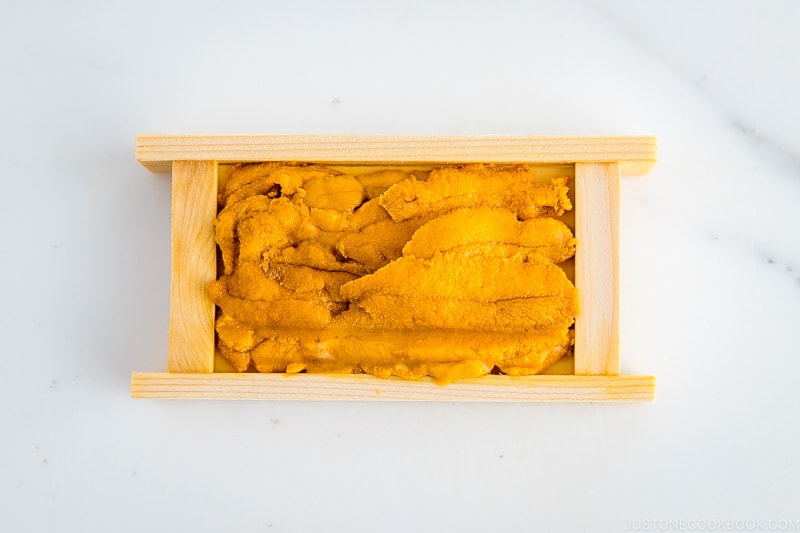
What Does It Taste
Uni is sweet, briny, and slightly slimy with a creamy, buttery consistency. It has an acquired taste, so it is either a love-or-hate thing. Like foie gras and oysters, people who enjoy uni appreciate it for its curious taste and rich umami flavor.
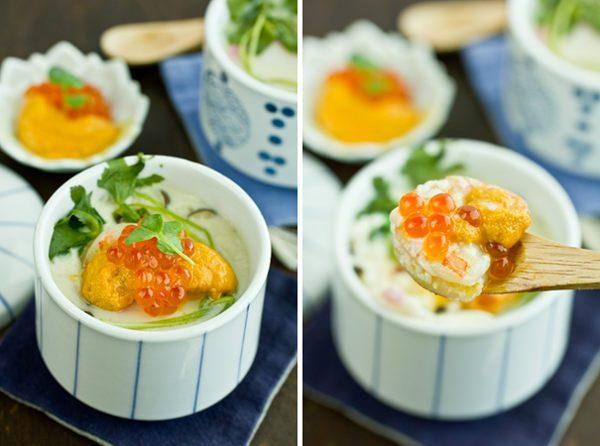
Varieties
While there are plenty of varieties, there are two main types of Japanese uni: murasaki and bafun uni.
Murasaki Uni
Murasaki uni (紫雲丹 AKA “purple uni,” Heliocidaris crassispina) is Japan’s most common type. As its name suggests, it’s a dark purple urchin that’s mustard yellow inside. It’s plump with a clean, mildly sweet, and briny flavor. It’s best eaten raw, such as sushi or sashimi.
Kita-murasaki uni refers to uni harvested in Hokkaido (northern Japan). It has a more delicate texture and is sweeter than murasaki uni.
Bafun Uni
Bafun uni (馬糞雲丹 “horse poop uni,” Hemicentrotus pulcherrimus) is much smaller than murasaki uni. Harvested in the deep ocean depths anywhere from Tohoku (northeastern Japan) to Kyushu (southern Japan), it has a more pronounced umami flavor that’s slightly bitter with a dark orange color. Many high-end sushi shops prefer serving bafun uni over murasaki uni.
Ezo-bafun uni (蝦夷馬糞雲丹) is another type of uni harvested explicitly in Hokkaido. It’s rich and sweet with a strong umami aftertaste.
How to Enjoy Uni
From raw to steamed to grilled to pan-sear, the possibility of uni is limitless!
In Japanese cuisine, it’s enjoyed raw in sushi, sashimi, or as a garnish. You can find uni as a lavish sashimi rice bowl (海鮮丼), a topping on Chawanmushi, or tossed in spaghetti for that creamy consistency. Fresh uni is sublime; it just needs a dip in soy sauce and a smidge of wasabi.
Preseasoned uni comes in jars, a more affordable and convenient way of adding uni to your cooking.
Where To Buy
Due to its high demand and popularity worldwide, you should expect a high price for a quality pack. The difficulty of raising and harvesting also contributes to the exorbitant cost. Beware of cheap uni, which may be highly processed or low quality. It can be sold in jars or wooden trays.
In the U.S., high-quality uni is harvested along the West Coast and Maine. You can buy it directly from the local fish markets in the areas (we get it at Santa Barbara Fish Market) or from online seafood suppliers such as Brown Trading Company. You can also find imported uni at Japanese grocery stores.
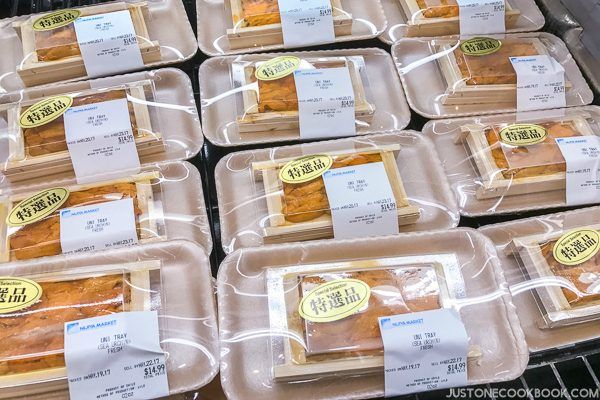
How To Choose The Best
Check the color and expiration date to choose the best and most fresh uni. Fresh uni should be brightly colored, firm, and not leaking liquids.
How To Store
Keep fresh uni in the refrigerator and consume immediately. For eating raw, it’s best within two days, or up to five days if cooked.
Frozen uni compromises its buttery, creamy texture, so keeping it in the fridge is best.
Health Benefits
Uni contains vitamins B1, B2, and omega-3 fatty acids, which support a healthy heart and brain. It’s also rich in vitamin A, which may prevent wrinkles and freckles, and even has cancer-preventing properties.
However, it’s high in cholesterol and calories, so like many delicacies, a small amount is fine, but you may want to avoid binging on it.
FAQs
Q: What are the differences between different grades of uni?
The quality of uni is graded based on color, texture, and freshness. Other factors include harvest origin, gender, diet, and harvest season. The highest grade of uni comes in vivid orange or gold with the sweetest flavor and firm texture. The lesser grades of uni have a duller color and are often the leftovers from processing.
In Japan, you can find uni sold in various forms, such as fresh, frozen, steamed, and grilled. It is also available as a paste or in jars, which are highly seasoned.
Q: When is the peak season for uni?
In Japan, the peak season for uni is from late summer to the end of April the following year. Uni becomes most flavorful when the gonads grow in size to prepare for the spawning season and become intensely flavorful.
Recipes Using Uni
Wish to learn more about Japanese cooking? Sign up for our free newsletter to receive cooking tips & recipe updates! And stay in touch with me on Facebook, Pinterest, YouTube, and Instagram.
